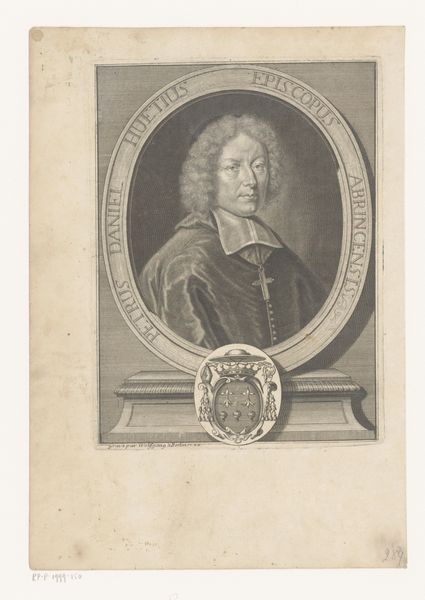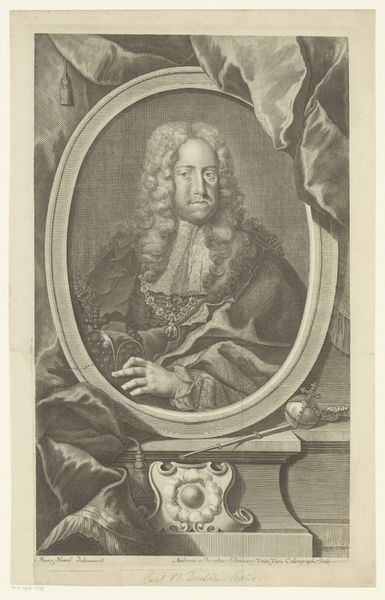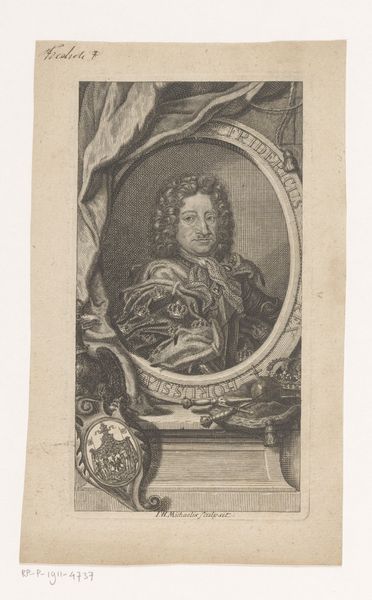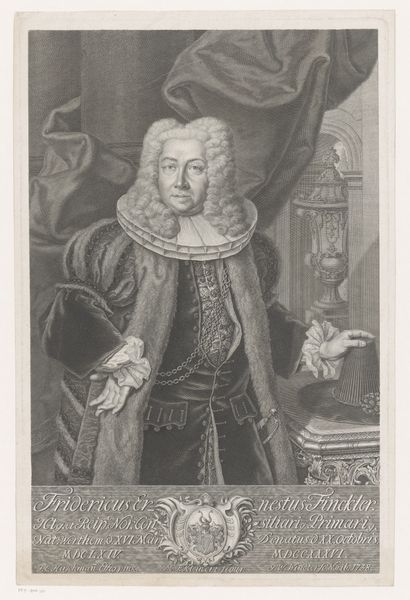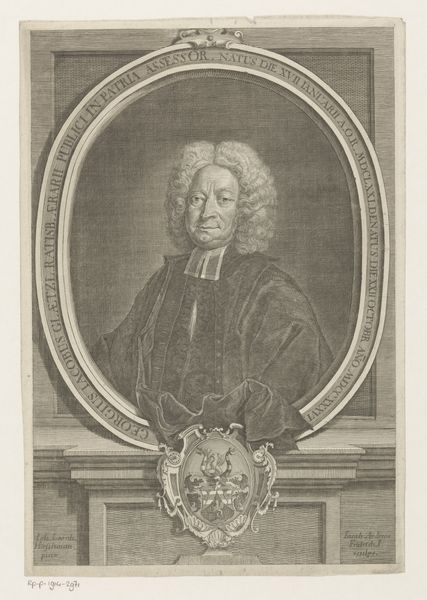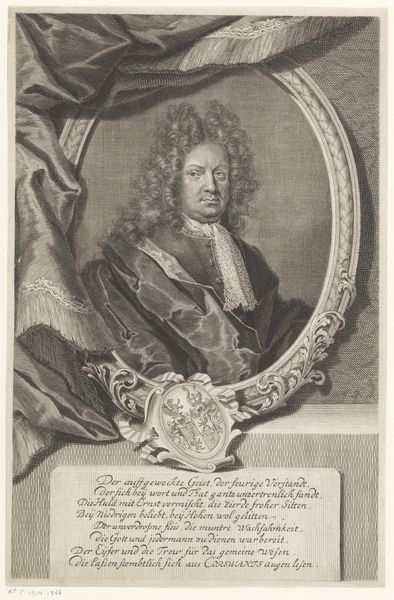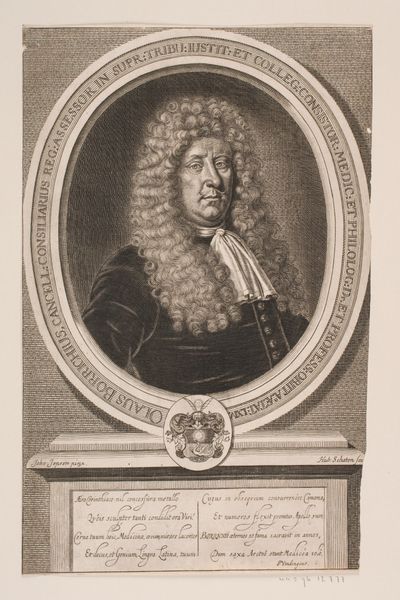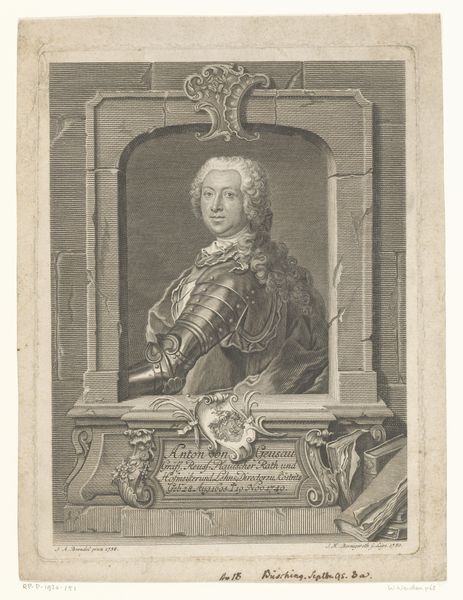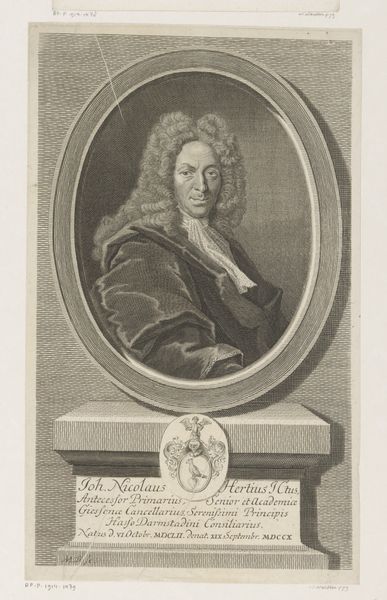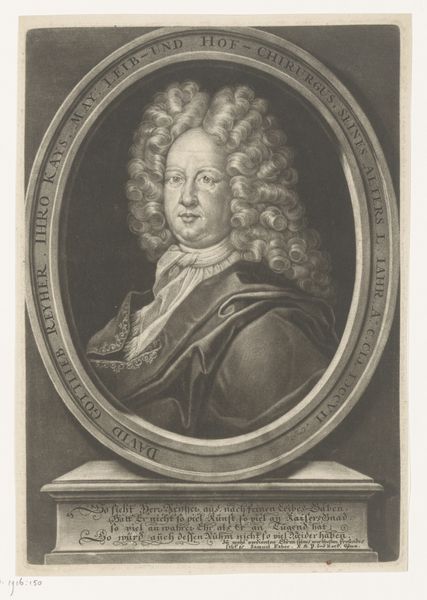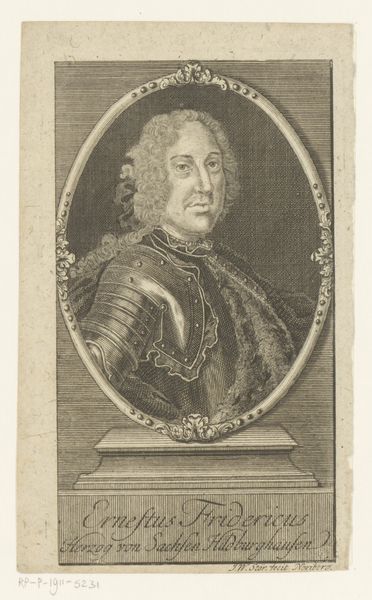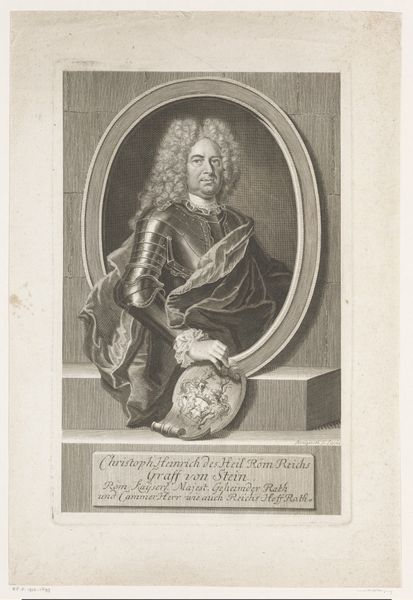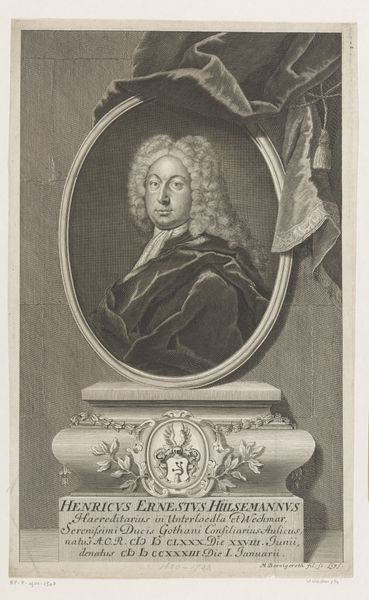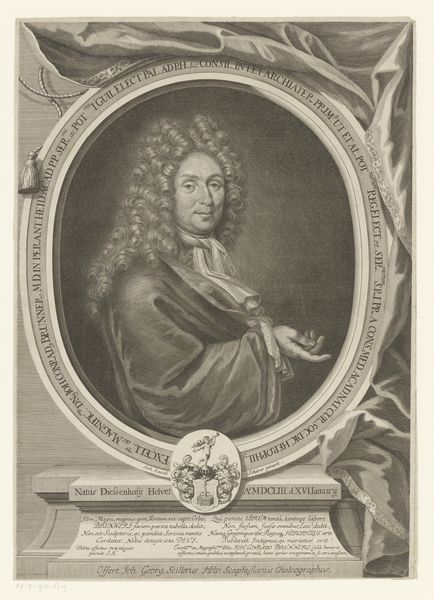
engraving
#
portrait
#
baroque
#
history-painting
#
engraving
Dimensions: height 302 mm, width 187 mm
Copyright: Rijks Museum: Open Domain
Curator: Here in the Rijksmuseum we have "Portret van Gottfried von Jena" by Martin Bernigeroth, created sometime between 1703 and 1733. What strikes you about it? Editor: Well, immediately the intense linearity! Look at the incredibly precise hatching and cross-hatching, especially around the face. It's a masterful display of the engraver's skill in creating volume and texture. Curator: Indeed. Bernigeroth's technique allows for such minute detail. Gottfried von Jena was, according to the Latin inscription below the portrait, an advisor to the King of Prussia and Chancellor of Magdeburg. This portrait, an engraving, served to disseminate his image and status amongst the elites. Editor: And that oval frame, like a window into a constructed persona. The coat of arms prominently displayed suggests a need to broadcast lineage, almost like a trademark for nobility. It's interesting how those heraldic elements are meticulously rendered—each line carrying symbolic weight. Curator: Absolutely, the Baroque loved this kind of representational project! The image isn’t just about Von Jena as an individual, but what he signifies within the societal framework. Consider how portraiture became a tool to convey power in the 18th century. Engravings democratized the image, allowing a wider distribution beyond painting. Editor: Look at the contrast between the smooth planes of his face and the agitated energy of his wig. That juxtaposition almost destabilizes the perceived decorum of the portrait. Curator: Good observation. Although engravings such as these were frequently commissioned to celebrate people like Jena, the image also operates within the complex socio-political structures. The portraits are performative acts, displaying prestige to cement political power. Editor: Yes. It is, after all, more than meets the eye on the surface. There are layers of subtle decisions informing what this portrait suggests and how. Curator: It's more than just visual spectacle; these were images woven into complex political and social fabrics. Editor: The beauty really exists in the fine lines themselves and how they work to produce a particular presence!
Comments
No comments
Be the first to comment and join the conversation on the ultimate creative platform.
